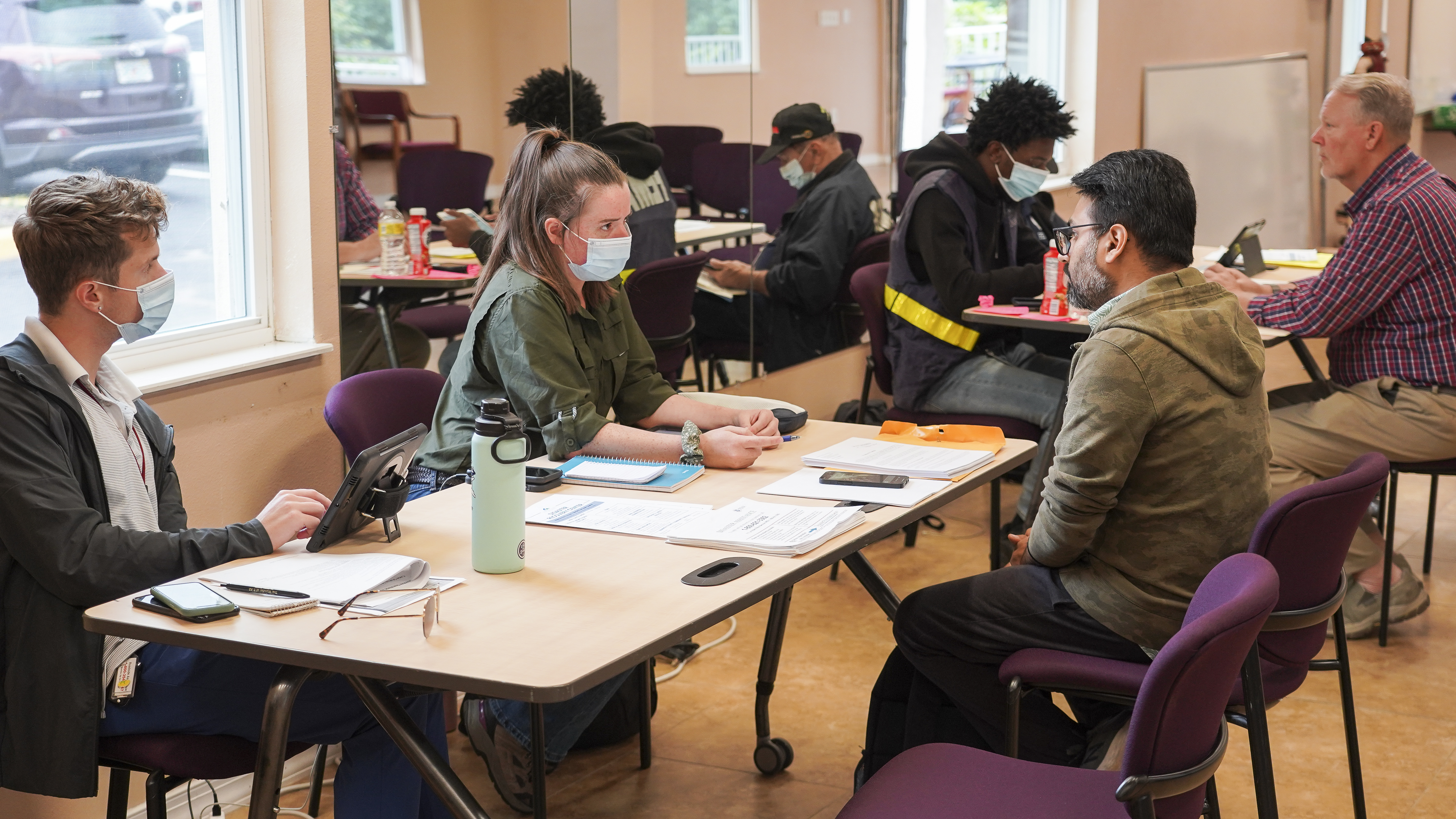Calculating a More Holistic
Burden Estimate
“I felt [so] overwhelmed and frustrated by the process that I wanted to drop out. Yes — and I think that's what they wanted me to do. They make it so hard that you just wanna be like, ‘screw it.’” — Tornado survivor

What is Administrative Burden?
When anyone — a disaster survivor, single parent, immigrant, small business owner, or Veteran — interacts with government services, they should have an equitable, streamlined, and dignified experience. Too often, people have to navigate a web of government websites, offices, and phone numbers to access the services they depend on.
Administrative burden refers to the costs involved in interacting with the government, such as time, money, and psychological stress. It is the time and effort required to learn about a program, fill out paperwork, assemble required documents, and schedule visits to government offices.[1] Simply put, it’s “an individual’s experience of a policy’s implementation as onerous.”[2]
Disaster survivors experience administrative burden when they apply for federal assistance. Applying for help and requesting services from multiple agencies and aid organizations — a repetitive, tiresome, and often re-traumatizing process — takes time and attention away from other recovery tasks.
To better support people when they interact with the government, agencies need to be able to identify and measure where burden exists in their processes.
Conducting a Holistic Burden Assessment
The team that developed the Holistic Burden Assessment Process designed a methodology to measure administrative burden holistically across the experience of applying for Federal disaster assistance. The Customer Experience Center of Excellence (CX CoE), part of the General Services Administration (GSA) supported the Office of Management and Budget (OMB) in this effort. Partner agencies included the Federal Emergency Management Agency (FEMA), the Small Business Administration (SBA), and the Department of Housing and Urban Development (HUD). This project is within the Recovering from a disaster Life Experience, in support of the President’s Management Agenda priority on delivering excellent, equitable, and secure Federal services and customer experience.
Agencies will be able to use this process and tools to better understand the customer experience and identify opportunities for service improvements.
Step 1
Identify program or service
Start by identifying the agency service to assess and measure. This will establish the scope of the assessment.
The service should have a discrete start and end from the customer’s point of view. It may start with them having a need that the service helps support. Ideally, the end is the customer achieving their goal.
Step 2
Define the customer group
Defining the customer group is essential, as no journey will be the same for every customer. Customers may access the service differently or need different support as they navigate the process.
The process is flexible so that the scope can be narrowed to focus on a specific customer group or be more broad — the tool can accommodate both approaches.
Step 3
Map the customer journey
A customer journey map is a visual representation or diagram that depicts the steps or stages a customer takes to achieve a particular goal when interacting with a product, service, or organization. The map typically shows the customer’s actions, thoughts, and emotions at each touchpoint or interaction along the way.
A customer journey map aims to provide a detailed understanding of the customer’s experience, identify pain points or opportunities for improvement, and inform the design and development of customer-centric products, experiences, and services.
An existing journey map can be used for this process, or a new one created by identifying each step the customer group takes from beginning to end to achieve their goal.
Step 4
Measure and rate each step in the customer journey
Each step on the customer journey map will be broken down into standardized actions using the Burden assessment rating scale (currently in development). Each action will then be rated based on the relevant criteria and consideration for that action.
Additional measures in this step include the time it takes to complete each action, the cost of each action, and the number of customers who complete each action.
Step 5
Complete a drop-off check
This check aims to flag steps of the service that may adversely impact different customer segments, including those who have limited English proficiency, those with disabilities, those who lack a consistent internet connection, and any others from underserved communities[3]. Be sure the responses reflect the perspective of multiple customer segments identified as potential users of the service at the beginning of the assessment process.
Step 6
Generate output
The output consists of four sections:
- Summary
- CX across the service journey
- Time and cost across the service journey
- Pain points for customers
Agencies can use this output to better understand points of high burden across the customer’s journey and the associated details. The insights give teams and stakeholders a data-informed report to assess and address customer challenges.
The tool itself is currently being tested by multiple Federal agencies and the community of High Impact Service Providers. This page will soon include additional resources and tools for calculating burden as the project progresses. The quarterly milestones table is the place to check for updates.
[1] E.O. 14058 on Transforming Federal Customer Experience and Service Delivery to Rebuild Trust in Government (Dec. 13, 2021): https://www.whitehouse.gov/briefing-room/presidential-actions/2021/12/13/executive-order-on-transforming-federal-customer-experience-and-service-delivery-to-rebuild-trust-in-government/.
[2] Herd, Pamela and Donald P. Moynihan, Administrative Burden: Policymaking by Other Means, Russell Sage Foundation, 2018.
[3] E.O. 13985 On Advancing Racial Equity and Support for Underserved Communities Through the Federal Government (January 20, 2021): https://www.whitehouse.gov/briefing-room/presidential-actions/2021/01/20/executive-order-advancing-racial-equity-and-support-for-underserved-communities-through-the-federal-government/.
